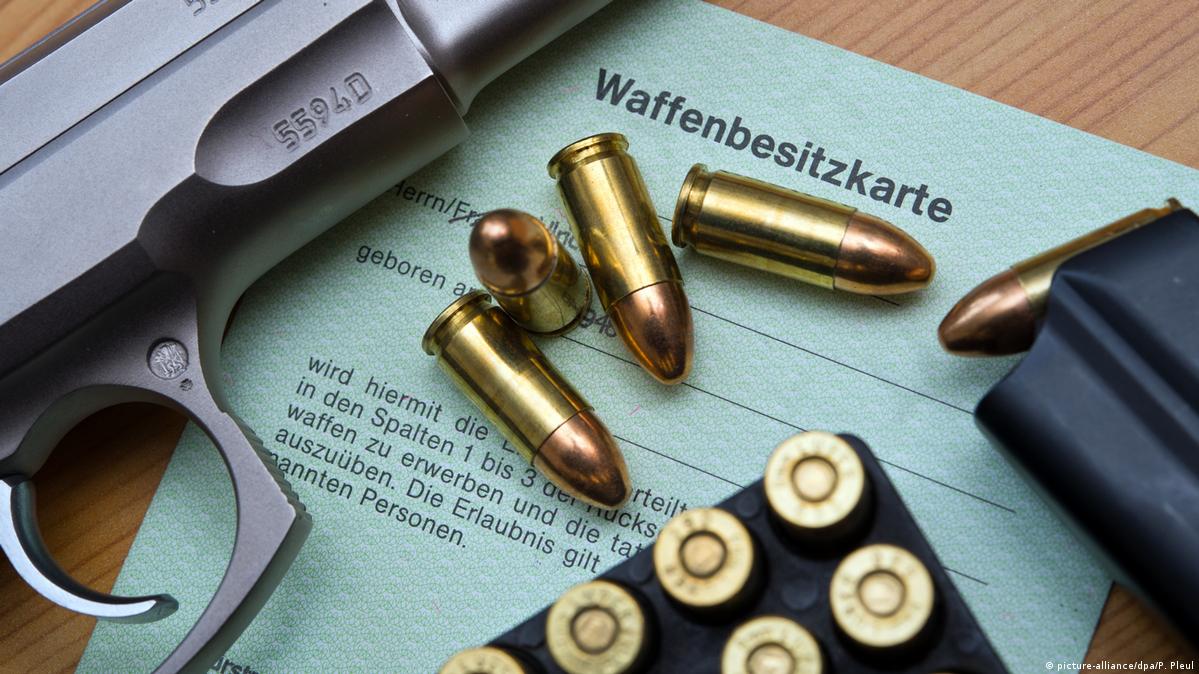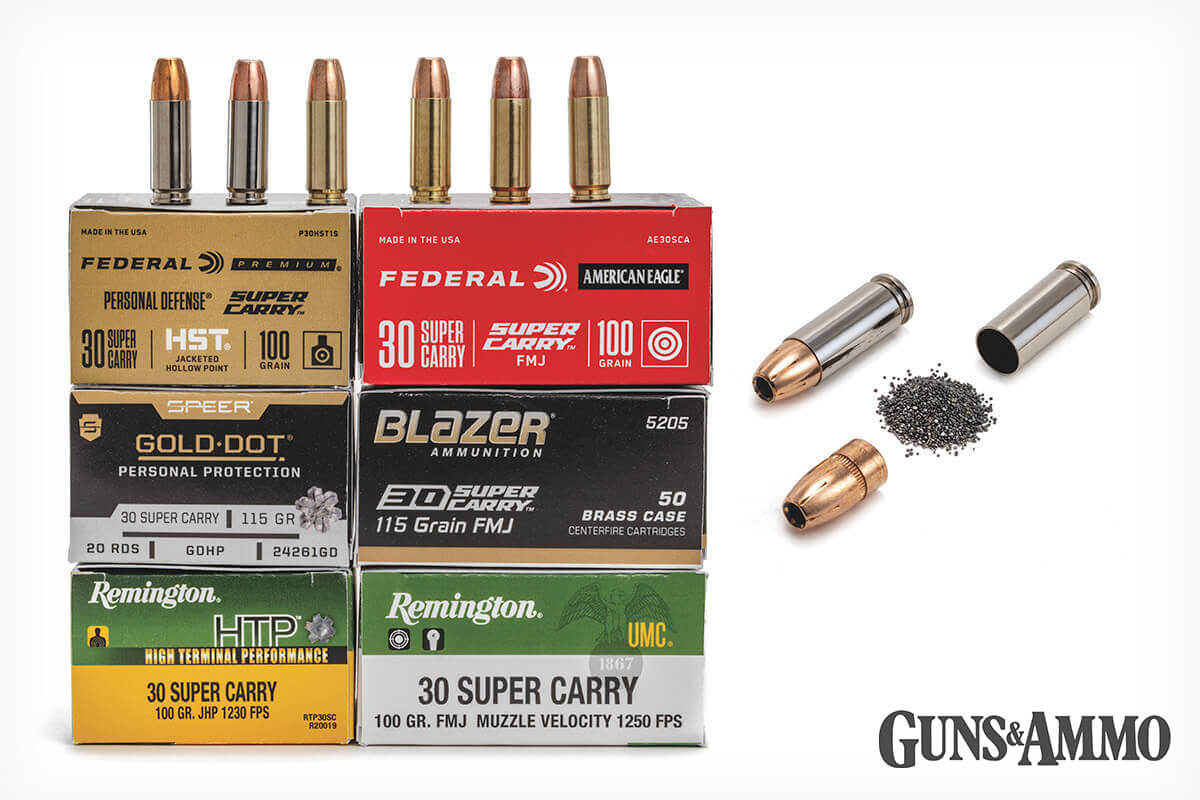Popular Handgun Calibers - Whether you're a brand new craftsman or a seasoned veteran, sometimes it's good to take a step back and look at some data on the cartridges we shoot. Maybe we're looking to expand our gun collection but we're not sure which way to go in terms of caliber, or we're curious where the .380 ACP came from, for example. Then again, we might reload and wonder if the new caliber we have in mind is easy to reload. An ink cartridge comparison guide is a good place to start.
One thing is for sure - we handgun shooters have never had it so good when it comes to the variety of cartridges available. Whether you are a hunter who prefers rimmed cartridges in either a single or double revolver or a shooter who uses a semiauto for various purposes, there is at least one cartridge that will get the job done.
Popular Handgun Calibers

The list of cartridges designed for handguns is long, but we'll look at the top 11 choices. How do I know these are the best choices? Selling. It is the best selling handgun cartridge in the US by volume sold. We'll look at where they came from, average ballistics, and typical uses for each.
Why The Best Snub Nose Caliber Is .32
When you look at the list, you will see rounds named with words or letters after their numerical designation. What do they mean? Why are some in millimeters and others not? What do "Special" and "Magnum" mean? Let's find out…
Calibers are given in either millimeters or decimals. This mainly has to do with where the cartridges come from. If it is from Europe it will be a metric designation although some metric cartridges were developed in the American rounds developed in England or the US will generally use a decimal designation. Both types of names simply indicate the diameter of the ball, more or less. The 9mm, for example, fires a 9mm bullet, about 0.355 inches in diameter. The 10mm and .40 S&W both shoot the same bullet – .401 inches in diameter. (Quick clarification - when I use the term "round" it means cartridge. I thought I should mention that up front).
An Other Descriptive Nomenclature is simply an informal designation to further differentiate between cartridges; here I will explain the non-numerical terms listed above:
The .38 Special and 357 Magnum cartridges both use a .357-inch diameter bullet, but the .357 Magnum round won't fit in the .38 Special's cylinder—it's too long, on purpose. The .38 case is 1.155 inches long with the .357 case measuring 1.285 inches, a difference of 0.17 inches. ). The older .38 Special is loaded to a much lower weight than the .357 Magnum, as is the proper .44 cartridge. The more powerful magnum cartridge would most likely blow up an older .38 or .44 special revolver. Therefore, we must be careful not to mix the two. Some very old .38 special revolver chambers are worn enough to allow the .357 Magnum cartridge to be loaded, but I wouldn't want to be the one firing it.
Caliber Wars: What's The Best Defensive Handgun Cartridge?
So, once you are familiar with the system, you will know that the .38 Special and the .357 Magnum shoot the same bullet, .357 inch diameter. Why call it a .38, you might ask. The .38 Special predates the .357 by a third of a century. A number of different .38 caliber rounds were used until the year (1898) that the .38 Special was introduced. The .38 Special round was derived from the .38 Short Colt which in turn was developed to fire in cap and ball revolvers converted from .36 caliber. It was called the â.38â even though it fired a .357 caliber bullet. â.38â refers to the diameter of the loaded box. Accordingly, the .38 and .357 both use .357-caliber bullets.
Special/Magnum Reloaders – Note: If you are a reloader reloading the special and magnum versions of any of these .38/.357 cartridges or their .44 counterparts, DO NOT reload a level magnum in the shorter cases. Use magnum cases for magnum loads only. It's ok to unload the magnum a bit, but still use the longer cases. Here is some advice from personal experience that is not so nice.
âACPâ stands for Automatic Colt Pistol. John M. Browning designed the .380 and .45 ACP rounds – more on this below.

âS&Wâ means Smith and Wesson, the company that developed the .40 cartridge. Others had a hand in it but the main stamp on the S&W .40 case says just that, 40 S&W.
Special Vs 9mm
The Colt .45 is so called because it was designed by Colt and introduced in 1872. It was intended to be fired in their 1873 Peacemaker single action revolvers. This was the official army cartridge for 14 years. Some sources will call it a .45 Long Colt, but technically it is a .45 Colt, the âLongâ part was added by the Army Quartermaster to distinguish it from today's shorter .45 cartridges, but we call it' n .45 Colt today.
Rimfire cartridge priming mixture is on the edge of the casing. .22 is an example of this. In the 19th century, many large caliber rounds were rimfires. Today, only a few cartridges are rim primed.
Centerfire cartridges use a separate round primer to fire the powder in the center of the case head.
Now that we know the difference, let's take center fire cartridges apart and define each part. (Rimfire cartridges use the same basic components without the primer but we will be looking at center fire rounds).
Caliber, Cartridges, And Bump Stocks: Guns, Explained For Non Gun People
Cartridge case: the brass (or aluminum) casing designed to hold the powder charge, bullet and center fire. This case is round with a flat 'head' (the head towards the loft) and either rimmed (revolver cartridges) or rimless (semi-auto cartridges) attached to the head.
A boxer's primer shoots through a central hole in the bottom of the box and contains the anvil against which the mass of the primer is pressed. These are by far the most popular of the two for modern handgun and rifle cartridges. Boxer-primed cases are easy to reload.
Berdan primers are constructed to shoot through two holes in the top of the casing, which contains the anvil against which the primer mass is pressed. This convex anvil is the location of the hole that the Boxer primer case contains. Berdan brass is very rare in modern guns - it is popular in Europe, mainly with older military rifles and handguns. Berdan primed cases are not easy to reload and are generally not worth the trouble. One should at least know the difference between Boxer and Berdan primers as most Berdan primer compounds are corrosive and must be cleaned after the gun is fired.

Here's how to identify the two: Look inside an empty cartridge case. If you see a hole in the bottom, it has been primed by a Boxer. Two smaller holes on either side of the center tell you it was primed by Berdan. Unless you're loading for a very rare, hard-to-find Berdan primer cartridge, you'll usually throw away the blanks. Berdan primer cases are not worth the trouble, trust me.
The Best Handgun Caliber For Self Defense Gets Reviewed From A Practical Perspective
There are two basic sizes of primer, large and small, and two different power levels, standard and magnum. This applies to both pistol and rifle primers.
The fuel is ignited by the primer and burns which in turn pushes the bullet down the barrel and out the muzzle. There are many different types of powder, each of which performs one or more specific tasks well. Slower burning powders are usually used in magnum cartridges. These powders usually require a larger amount charged in the case and burn at a slower rate. This is what it takes to move a large bullet down the barrel of a long magnum revolver at top speed. At the other end of the spectrum are fast-burning powders that outperform lighter target loads or rounds for use in semi-autos with their shorter barrels. Choosing a powder can be an article in itself – it involves many details and variables.
The projectile that is thrown out through the barrel of the gun when the primer ignites the powder. Note that the bullet is ONLY the projectile...don't call the entire cartridge a "bullet". It's called a cartridge for good reason.
There are thousands of bullets available, but for our gun purposes we are discussing cast or jacketed bullets here. Each has its uses. Suffice it to say, cast bullets are generally used in lower velocity target loads or in magnum level hunting loads in revolvers and semi-autos. Jacketed bullets (jacketed hollow point, JHP or jacketed soft point, JSP) tend to be used in self defense or hunting loads because they expand to a larger diameter after hitting the target to increase target incapacitation that. As with cast bullets, jacketed bullets can be fired in either revolvers or semiautos.
Handgun Recoil Chart
Handgun calibers comparison chart, most popular handgun caliber for law enforcement, calibers, what is the most popular handgun, most popular police handgun, popular hunting calibers, large handgun calibers, small handgun calibers, handgun calibers in order of power, popular calibers, common handgun calibers, powerful handgun calibers
0 Comments